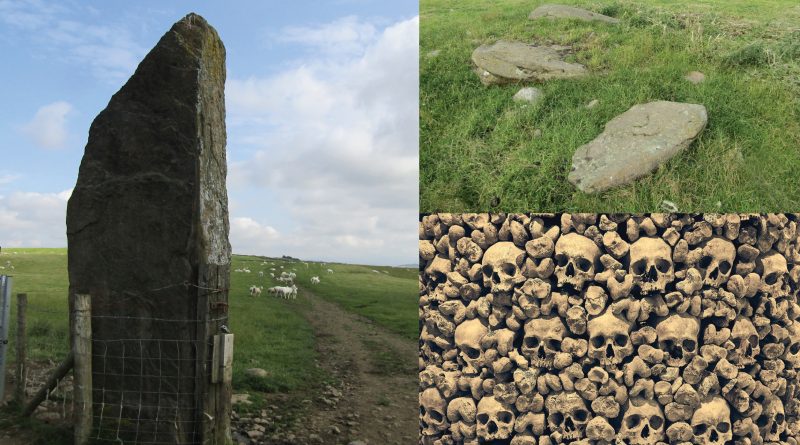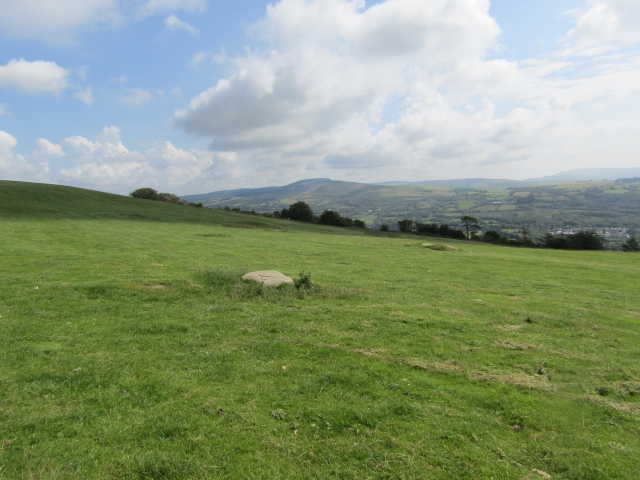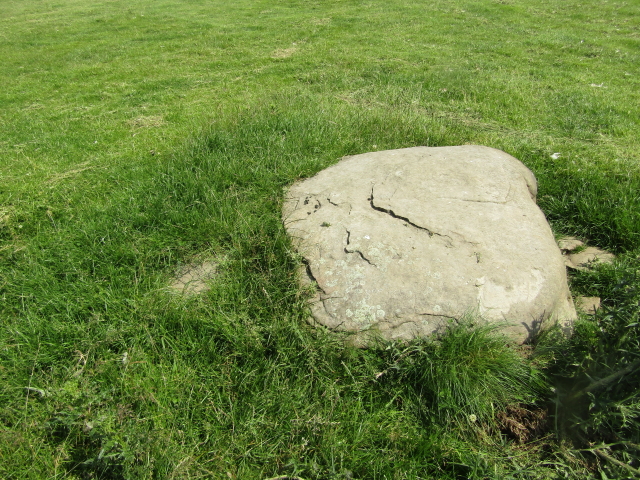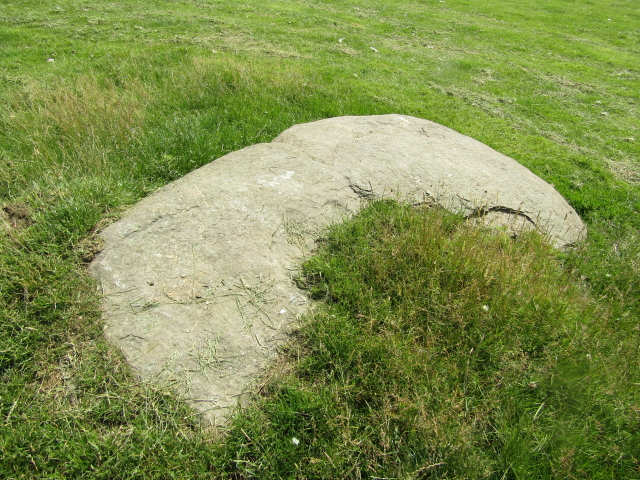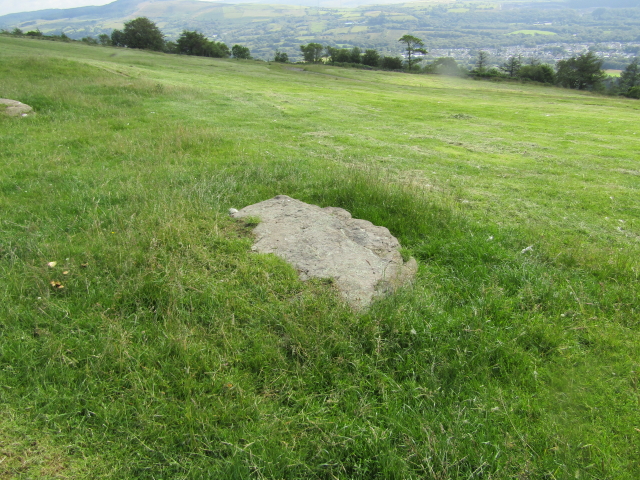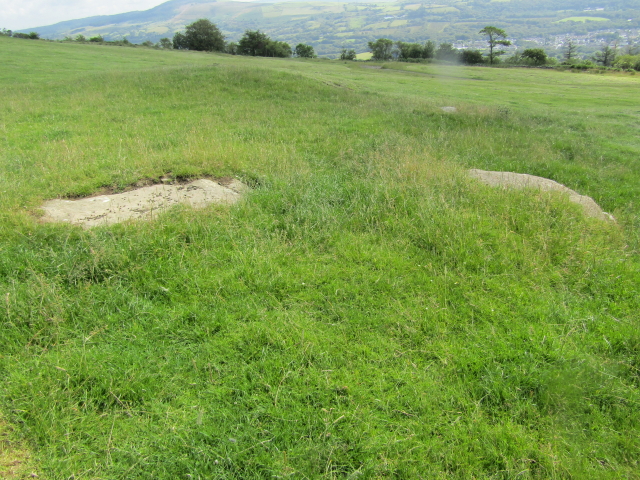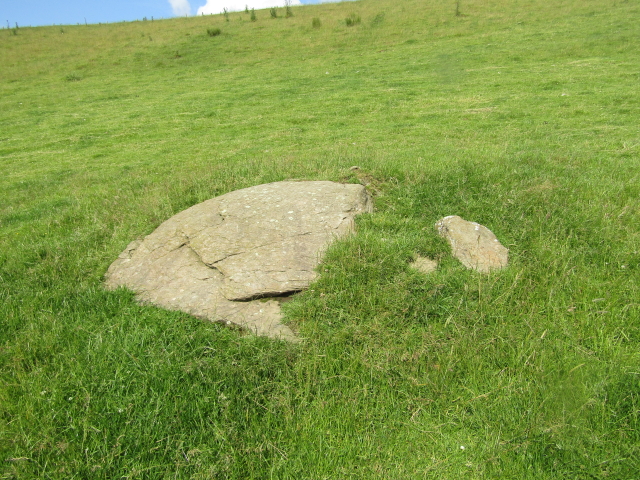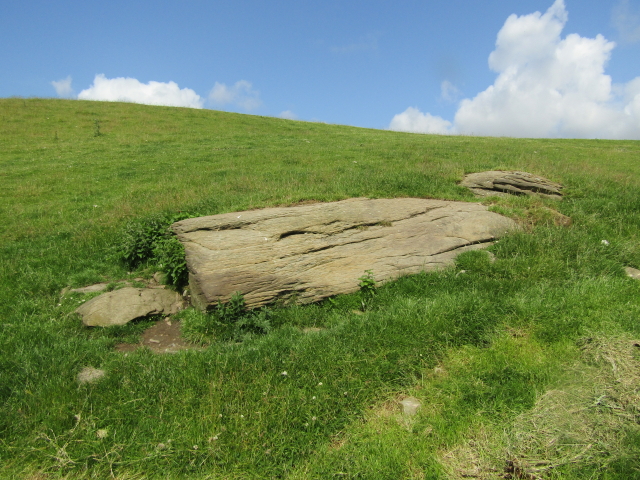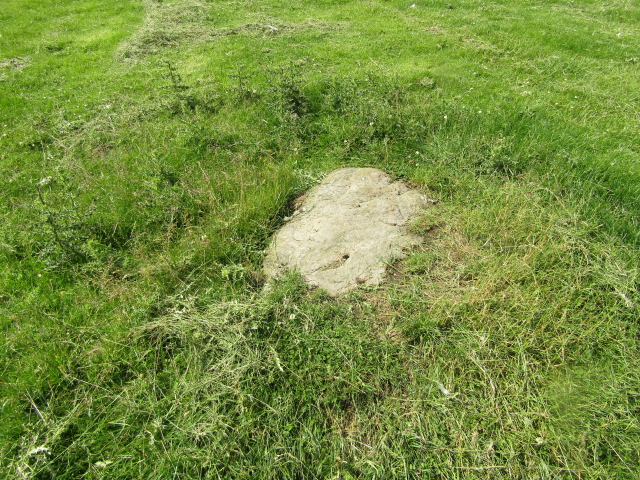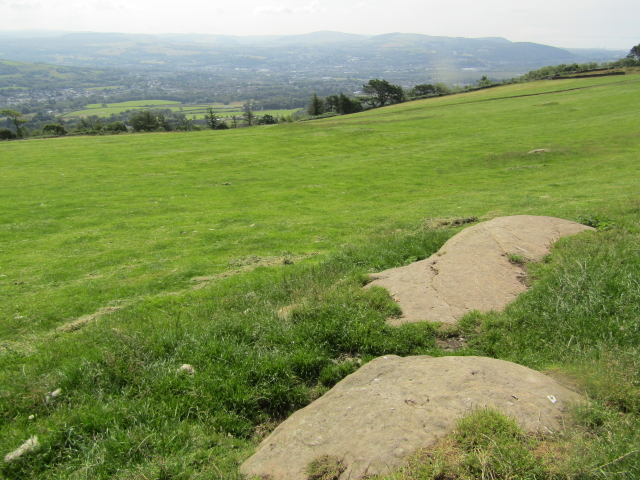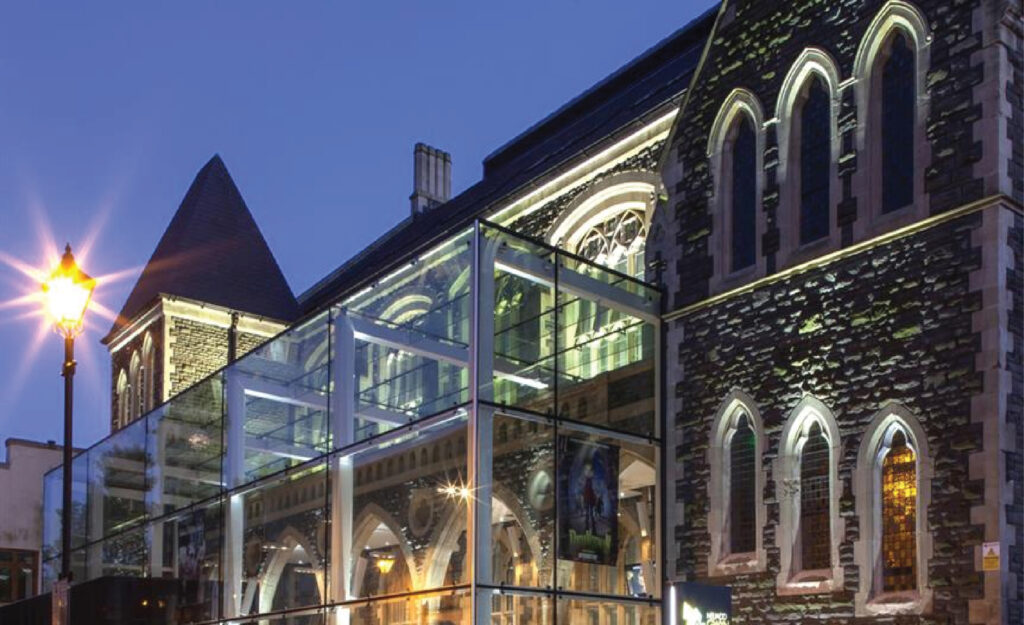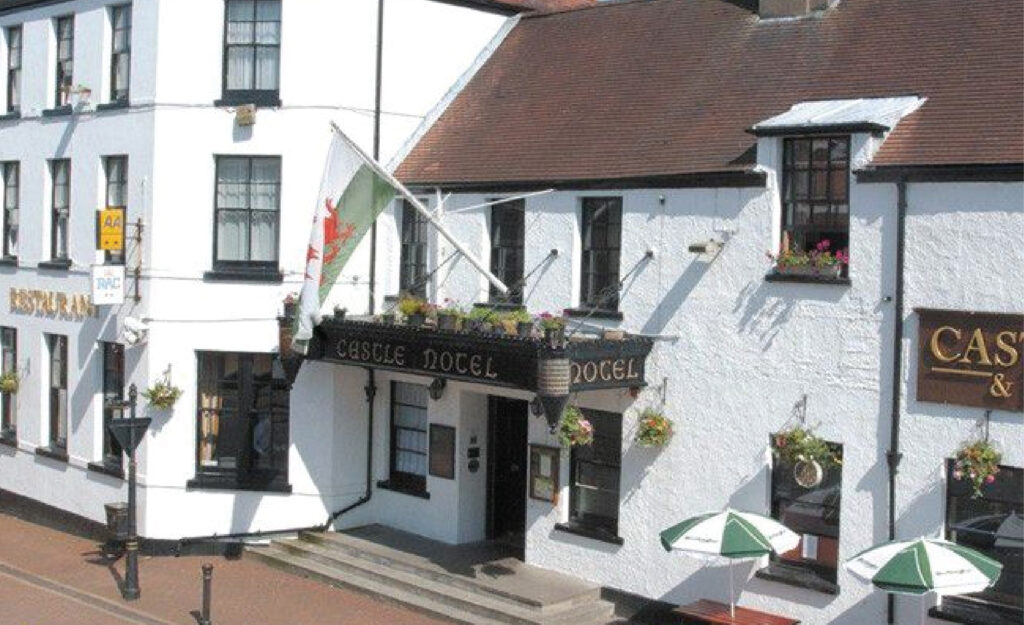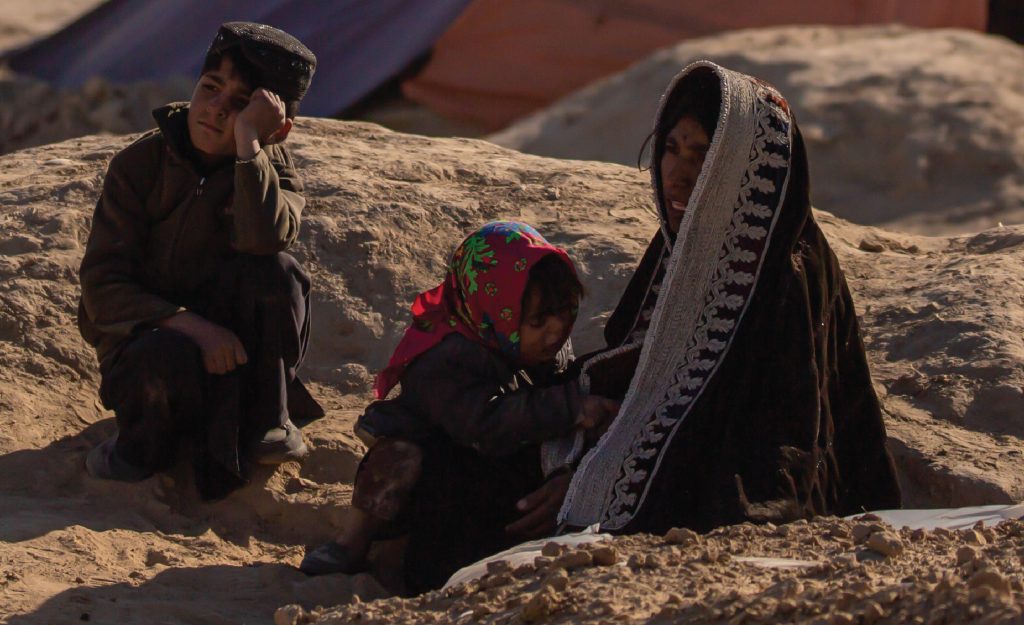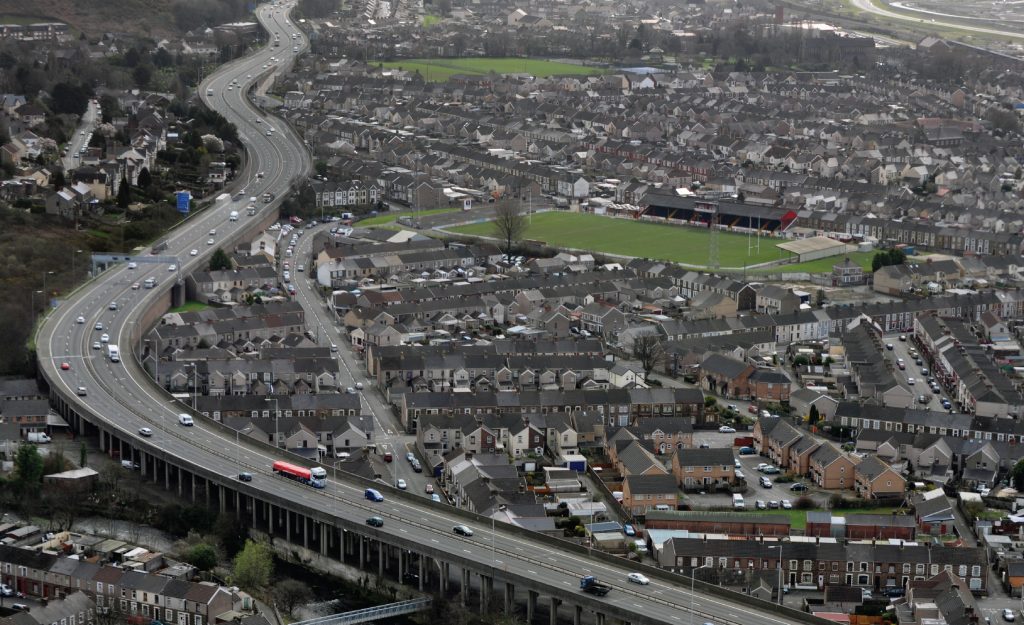HEAP OF BONES & ANCIENT CELT FOUND ON MYNYDD DRUMAU
The historic questions about Mynydd Drumau outnumber the answers. But often there is more fun in the not knowing.
What appears certain is that the area between Bryncoch and Birchgrove, which overlooks Skewen, Neath and Neath Abbey are reaped with ancient history.
Careg Bica: Standing Stone
The first mystery is well known and difficult to miss. Maen Bredwan, (also known as Careg Bica) is a 4.3 meter standing stone. In 1203, King John used the stone as a marker between Gower and Glamorganshire. Over eight centuries later, the boundary between Neath Port Talbot and Swansea follows almost exactly the same line.
It is thought the stone pre-dates this Medieval era by quite some time. Potentially a few thousand years.
Cadw (Welsh Government’s historic environment service) believe “The monument comprises the remains of a standing stone, which probably dates to the Bronze Age (c. 2300 – 800 BC). The stone is a monolithic slab of local sandstone with a rectangular base 1.2m by 0.6m and rising 4.3m high to a blunt point.”
The sheer effort which it would have taken to move and put this stone into position is incredible. It would have required an organised, clever and civilized society. And a real desire and purpose. So, what was that purpose and who were these people?
Stone Clues on Mynydd Drumau
There are other examples of bronze age settlements across the hill tops. All of which can help date the activity and hopefully give an idea as to why and who.
Cadw say “There is a strong probability of the presence of intact burial or ritual deposits, together with environmental and structural evidence. Standing stones are often part of a larger cluster of monuments and their importance can further enhanced by their group value. The scheduled area comprises the remains described and areas around them within which related evidence may be expected to survive.”
In fact, in 1695, one cist was first recorded by Edward Llwyd when it apparently still retained a revetment circle of large stones. An excavation in the early 19th century produced ‘a heap of bones and an ancient celt, very much corroded’.
You do not need to be a historian to appreciate and to realise the potential monuments. In most fields, there are questions. There are numerous examples of small Cairns, burial chambers and potentially the remains of a large stone circle.
You can see some examples here:-
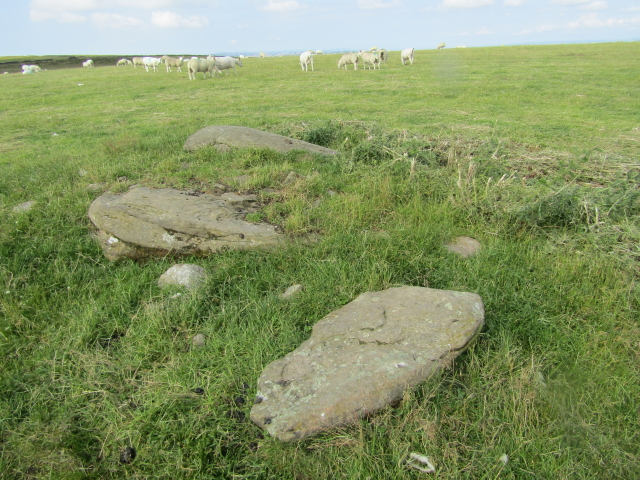
Importance of Mynydd Drumau
Cadw call the area “of national importance for its potential to enhance our knowledge of prehistoric burial and ritual practices. It is an important relic of a prehistoric funerary and ritual landscape and retains significant archaeological potential.”
Local Area
This is not the only local area which appears to have a rich Ancient history. Carn Llechart, is a stone circle near Pontardawe dated to around 1500 BC. Which is within the timescale Cadw suggest there was activity here.
Our understanding of Wales during this time has changed over recent decades and even more so in the last few years.
The previous belief was of a hostile era where ‘foreign’ tribes were constantly at war. However, it is now understood that it was far more peaceful, with regular trade and communications between not only fellow Welsh tribes or even British tribes but from tribes from parts of mainland Europe and Ireland as well.
This change in our understanding of Bronze Aged Wales adds further possibilities to our site between Bryncoch and Birchgrove and of who built it.
The Beaker People
Around 2000 BC, a new pottery style arrived in Great Britain. It is a period known as the Beaker culture, named after the pottery itself. The pottery, is the traditional early big round drinking beaker. The earliest such pottery can be traced back to 2700BC and was discovered in modern day Portugal.
These discoveries and the scientific method in being able to date these finds led historians to theorise that the art of pottery spread via the movement of people. The new style of pottery worked its way through Europe, into Spain, France, Germany, Poland and over to our shores.
The Beaker culture also brought the skill of refining metal to Great Britain. At first copper, but from around 2150 BC smiths had discovered how to make bronze. With this discovery, the Bronze Age began in Great Britain.
Changes
It was not just new skills which the Beaker people brought here. There were notable behavioural changes at this time too. The Beaker culture changed the ways that people buried the dead (which until this period had usually been communal) to becoming more individual.
Previously, a large chambered cairn or long barrow was used to house the dead but the ‘Early Bronze Age’ saw people buried in individual barrows. We see a lot of large individually placed stones on the Drumau which could have been used for this.
Often the deceased were buried with a beaker full of liquid to ease the journey to the next life (well this is one theory). There has been evidence of beer and mead within some jars found in Cists from Scotland. Men and Women were mostly treated the same, interestingly the only difference was that men tended to be buried facing the East, and women facing West. So, one had sun rise and the other sun set.
Who placed these stones?
It seems possible that Careg Bica and surrounding stones was built around the same time as nearby sites near Resolven and Pontardawe. If these dates of around 1500BC are right then an influence from the Beaker Culture is almost certain.
There is a clear merger of cultures over this time in Britain. It is thought that the Beaker people themselves built Stonehenge.
What we do know is that the cultural change at this time in Britain was huge and another debate amongst historians has been whether the change was simply the passing of information or whether it was more of a change of the people living here.
Beaker Remainers
We know that the ‘Beaker People’ of mainland Europe came to the British Isles but with modern science, we also know that not all returned. Around the site of Stonehenge for example, scientists have traced tooth enamel from some of those buried nearby to modern day Switzerland.
So how many stayed? Were the Beaker people a race of people who migrated to Britain en masse from the continent or did they simply share their cultural “package” of goods and behaviour which spread above Skewen?
New Evidence
A 2017 study seems to have put an end to the debate. It showed a major genetic shift in late Neolithic/early Bronze Age Britain, so that more than 90% of Britain’s Neolithic gene pool was replaced with the coming of a people genetically similar to the Beaker people of the lower-Rhine area in West Germany.
This indicates that around 4,000 years ago, large numbers of Beaker people came to these shores and settled here for good. Many historians believe that it was the early Beaker people who brought the Celto-Italic languages here too.
We are unlikely to ever know the exact answers to many questions about our earliest site. The first examples of writing on these shores were in Scandinavian, written on stone over 1500 years later. There is little written of the battle of Hastings 1000 years after that. We are left with archaeological discoveries and trying to understand its findings.

